Any time the weather is good is a great time to enjoy day hikes. Hikes are a great way to relax and enjoy solitude. I also enjoy spending time with loved ones, family, and friends as a group activity. It’s a good way to expose kids to the beauty of nature outside city life.
It can be a good business activity, too. A few years back, a potential client invited me to join her for a morning hike instead of a morning coffee meeting.
You will invariably encounter other people who enjoy the same activity wherever you hike. If you abide by these simple courtesies, your hikes will be pleasant, safe, and stress-free.
8 Tips on Hiking and Wilderness Etiquette
1. It’s okay to have a different hiking pace
Don’t try to hike at your partner’s pace if your speeds don’t match. It’s better to split up for a while if you are on a well-defined, clear trail. Meet up at predetermined points along the way. This way, you can hike at your own speed, enjoy the unique solitude of walking alone, and probably see more wildlife.
2. Hiking with kids has its challenges
As soon as children can walk well (around age four or five, and certainly by six years old), head out on brief day hikes to get a feel for the child’s pace, level of interest, and endurance. This will also test parents’ patience and tolerance, not to mention the ability to carry the kid back to the car when that last half-mile is just a little too far. Kids will stop walking when they get tired, hot, wet, or miserable. Younger kids will complain and want to stop when the going gets tough. Kids don’t see the point of suffering like adults do because adults are too embarrassed to complain.
3. Enjoy the peace and quiet
Leave electronic devices (phones, radios, and music) at home. If you want to listen to something, listen to the sounds of the wilderness. Resist the temptation to catch up on phone calls, texts, and surfing the net.
Be sensitive to how much noise you make, especially in a group. When you’re outside, sound carries much farther than you think. Keep your voice down, and don’t make unnecessary noise. Act as though you are in a library or watching a performance in a theatre. There’s lots to see and hear.
While there is a distinct lack of city noise, such as traffic, honking horns, telephones, buzzers, beepers, car alarms, and (I hope) blaring music, there is no shortage of sound. Sounds of wind, water, birds, and animals add to the music of the wild. This is the most common reason people go into the woods, to enjoy the sounds of nature and the relative silence that ensues.
4. Stick to pre-arranged plans
If you are hiking with a partner or a group, don’t go off alone without telling someone what you are doing and when you intend to rejoin the group. If you agree to hike, picnic, or camp in a specific location, don’t make a spur-of-the-moment decision to leave alone. The group will get worried or even frantic if you disappear. They could even get hurt or worse if they look for you in unfamiliar territory or in the dark.
5. Stay on the trail.
Established trails are designed for the high impact of many hikers. Walk in a single file so as not to widen it. Wear hiking boots as the best way to stay on the trail through wet or muddy stretches. Skirting puddles create additional side trails and unnecessary erosion.
Don’t shortcut the switchbacks. They are designed to minimize erosion and ease the ascent and descent in steep sections. Cutting these corners causes downhill drainage that can quickly erode a trail. When taking a rest break, move to the side, off the path to a complex, rocky area, a non-vegetated place, or a place with durable vegetation, such as dry grass.
6. Share the trail
If people behind you catch up, step aside—typically to the right—and let them pass. While this may seem obvious, you’d be surprised how many hikers choose to speed up instead. The problem is that slower hikers usually can’t maintain the faster pace and must slow down eventually, so faster hikers catch up anyway. Repeating this strategy becomes uncomfortable for everyone, so don’t do it.
7. If you pack it in, pack it out
Whatever you bring with you, even when on a day hike in a local park, take it out or dispose of it in a trash or recycling container provided by the park. Some trash items, such as batteries, are considered toxic waste and must be disposed of properly, not tossed out with the regular trash.
8. Respect the environment and wildlife
Don’t alter the environment to your liking or bring home souvenirs. Allow the next person to see as much of the natural world as you did. It’s exciting to find an arrowhead or deer skull by the trail. Why not leave it there so the next hiker can enjoy the same excitement as you did? Taking photos is my way of preserving what I see.
You are in the home of wild animals and birds, so respect their need for undisturbed territory. Disturbing animals can interfere with feeding or breeding behavior. When following an animal for a photo, stay downwind, avoid sudden motions, and don’t charge or give chase. Please resist the temptation to feed wildlife. Leaving seeds for birds or breadcrumbs or nuts for squirrels can upset the natural balance of their food chain. Feeding wild animals can make them dependent on human food, which causes big problems. Bears have been known to rip the doors off cars to get to the people-food inside.
BONUS: Protect yourself from lightning
If a thunderstorm comes upon you while hiking, your instinct might be to take cover and get into a shelter. But sometimes protection can be more dangerous than staying outside. Find a place least likely to attract a strike. Avoid peaks or tops of hills, exposed ridges, tall trees, and open fields.
Probably the safest shelter is inside the “safety shadow” of a potential lighting target. This means you’re far enough away to be relatively safe from a direct strike and ground currents. but not so far away as a target. If you are near a large tree or another target, stay inside an area where the horizontal distance from the target is about one-half the tree’s height above you. It is best if the tree is 5 to 10 times your height, so you can reasonably distance yourself from the potential strike zone.
Wherever you place yourself, put a non-conducting item between you and the ground by crouching on your pack or knapsack, a rolled-up jacket, or a dry rock. Assume the “lightning position” with your feet close together and your buttocks off the ground. Hug your knees or put your hands on them.
Conclusion: Take time as often as possible every year to enjoy the great outdoors!
QUESTION
What other items do you think should be added to this list of hiking etiquette? Use the space in this article to submit your comments or email me at Info@AdvancedEtiquette.com, Subject: Hiking Etiquette.
Happy Practicing!

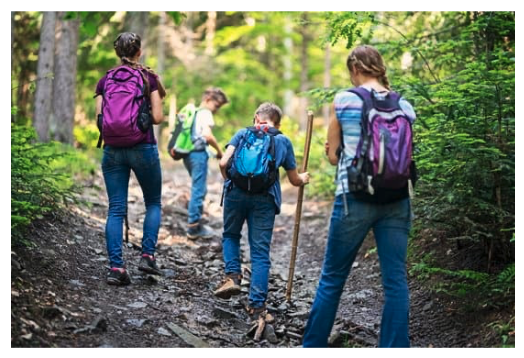
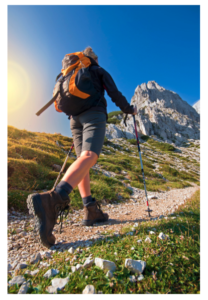
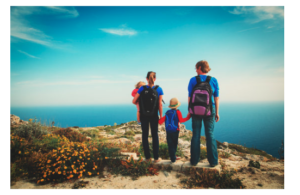
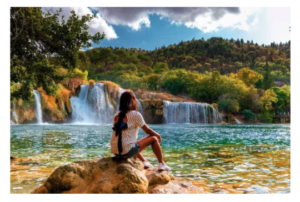
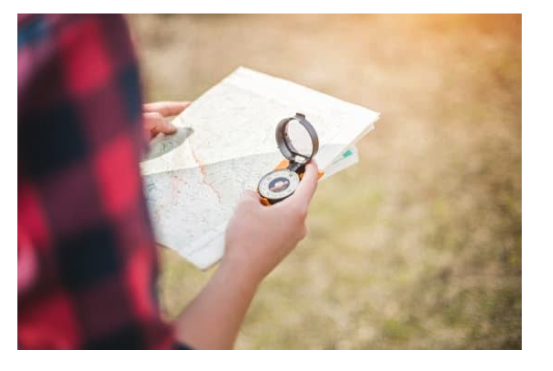
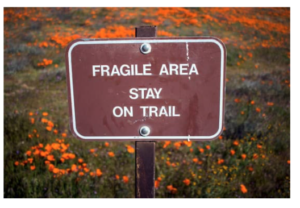
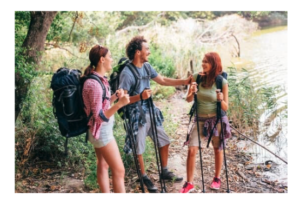

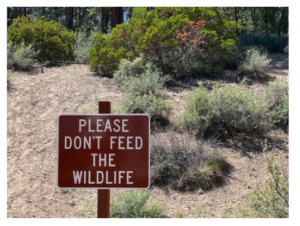
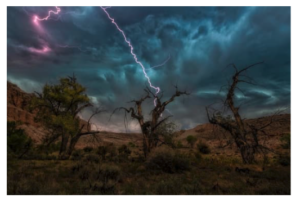
Great advice, Syndi. I’m going to tweet it and mention you.
Dawn
addition to #7
When you go hiking with your dog, do not leave plastic bags of dog waste on the trail. Pack it out!
When passing other hikers on an inclined trail, and the trail is on a slope, who moves to the upside of the trail? For clarification, we are on the side of a mountain, and the trail is changing in elevation. So there are two inclines, one along the trail and one to the sides. I am asking which side of the trail the yielding hiker steps to.
Frank Will: The answer is the yielding hiker is the person descending versus the person ascending and stepping aside means stepping toward the mountain, versus the side that falls down the mountain. It takes more energy for hikers to go uphill, than downhill, so the courtesy and etiquette is to step aside to help uphill hikers maximize their energy and momentum.
Thank you!
I do believe all the ideas you’ve introduced for your post.They are very convincing and
will definitely work. Nonetheless, the posts are too quick for starters.
Could you pleaee extend them a little from subsequent time?
Thanks for thhe post.
Werner: Thank you for the comment. However, there is a fine line between too brief and too long. Some already say my articles are too long. The attempt with all my posts is to provide enough information to be meaningful… with a theme of providing 8 tips (Chinese good luck number) and from there, whatever other questions you want answered to please submit them and I will answer. Sometimes when lots of questions are submitted I will produce a part 2 article that will capture up to 8 more tips. Beyond this I’m told blogs are not intended to be tomes.
Thanks for the great article. Great tips! I have always hiked solo. I appreciate it whenever someone makes the effort to educate people before they enter the woods. By the way, thank you so much for your share.
Eddi Stanley
http://www.outdoorgearland.com
Eddi: I believe in sharing good content and good companies.
If there are other topics you would enjoy seeing me write about, please let me know at info@advancedetiquette.com. I’m always looking for new topics.
All the best!